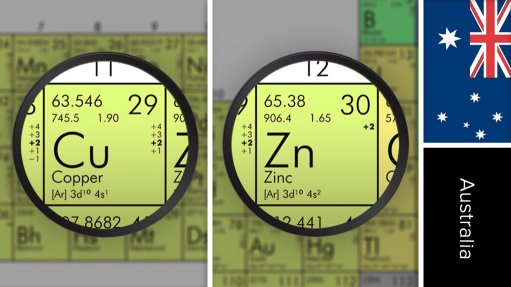
Name of the Project
Woodlawn zinc/copper project.
Location
New South Wales, Australia.
Client
Heron Resources.
Project Description
A feasibility study on the Woodlawn project supports the viability of a starter case to deliver zinc, copper and lead concentrates to the market over a significant reserves-based mine life. The project has total underground mineral reserves of 2.8-million tonnes grading 14% zinc equivalent, 5.5% zinc, 1.6% copper, 1.9% lead, 0.45 g/t gold and 42 g/t silver. Reclaimed tailings mineral reserves are estimated at 9.5-million tonnes grading 6% zinc equivalent, 2.2% zinc, 0.5% copper, 1.3% lead, 0.31 g/t of gold and 31 g/t silver.
An initial 9.3-year mine life, based on processing the combined underground and tailings mineral reserves, is expected. Inferred mineral resources defined in the underground and tailings projects demonstrate excellent potential to extend the mine life to more than 11.5 years.
The underground mine plan focuses on the shallower areas of the deposit, reflecting the success of the preliminary economic assessment completed in 2015 and feasibility study drilling programmes.
The underground deposit will be accessed through a boxcut located to the west of the existing openpit, allowing for the early development of shallow underground material. Stoping areas will be accessed predominantly through a new decline and new access drives; however, in some areas, the existing workings are planned to be rehabilitated and used.
The mine access drives range from 3 m × 3 m to 5.5 m × 5.5 m, with gradients of up to 1:7, depending on the intended use. Overall mine layout is consistent with standard practice in Australian underground mines reliant on decline access and vertical excavations for ventilation returns, and a second means of egress (escape way).
Mining of the reclaimed tailings ore will be undertaken using automated monitor-based hydraulic mining, which uses a high-pressure water cannon to agitate the ore into a slurry. In consultation with hydraulic mining consultants, the mining approach has been revised from a top-down to a bottom-up mining method, which is considered to be safer, with lower environmental impacts, as well as being easier to control and more cost effective.
The study envisages a processing rate of up to one-million tonnes a year from underground mining and up to 1.5-million tonnes a year from reclaimed tailings processed through a standard single-sulphide flotation facility.
For underground ore, a two-stage crushing circuit has been incorporated into the plant design, together with a primary ball mill.
For reclaimed tailings ore, a fine-grind mill is to be installed to reduce the particle size to 30 μm, a size that previous and current testwork has confirmed maximises recovery performance from the flotation circuit.
For the underground ore, the initial float (copper concentrate) is undertaken at 75 μm, with a regrind of copper tails to 30 μm to maximise the subsequent recoveries from the lead and zinc flotation stages.
The flotation circuit comprises a gangue-prefloat, copper, lead and zinc differential flotation sequence.
The overall plant design is broadly consistent with the design of the original plant used from 1978 to 1998 to successfully treat Woodlawn ore.
Cleaner concentrate recovered from the prefloat flotation cleaner cell will be discarded to final tails to remove the silicate gangue before it reaches the differential base metal flotation circuit. A differential flotation circuit for copper, lead and zinc will be used, with concentrate regrind stages in the copper, lead and zinc circuits to produce cleaner concentrates. The copper circuit will also use a rougher and scavenger tailings regrind circuit prior to the lead flotation stage.
Concentrates from the copper, lead and zinc flotation circuits will be thickened and subsequently filtered for road transport.
The project is expected to produce 40 000 t/y of zinc, 10 000 t/y of copper and 12 000 t/y of lead at steady state, contained in zinc, copper and lead concentrates.
Potential Job Creation
Not stated.
Net Present Value/Internal Rate of Return
The project has a post-tax net present value, at an 8% discount rate, of A$207-million and an internal rate of return of 32%, with a payback of 2.3 years.
Value
Initial capital costs of A$144.2-million have been estimated.
Duration
The aim is to bring the project into production in 2018.
Latest Developments
Heron Resources has ramped up activities at its Woodlawn zinc/copper project after completing project financing.
The company has told shareholders that 45 contract staff and equipment have been mobilised to site, with work well under way on the site access road, plant and office site, sediment dam and run-of-mine pad.
Over the next few weeks, earthworks for the underground boxcut will start, along with the haul road, tailings storage facility and the relocation of a section of the existing high-voltage electrical network.
Key Contracts and Suppliers
Ertech (earthworks contract).
On Budget and on Time?
Too early to state.
Contact Details for Project Information
Heron Resources, tel +61 2 9119 8111 or email heron@heronresources.com.au.